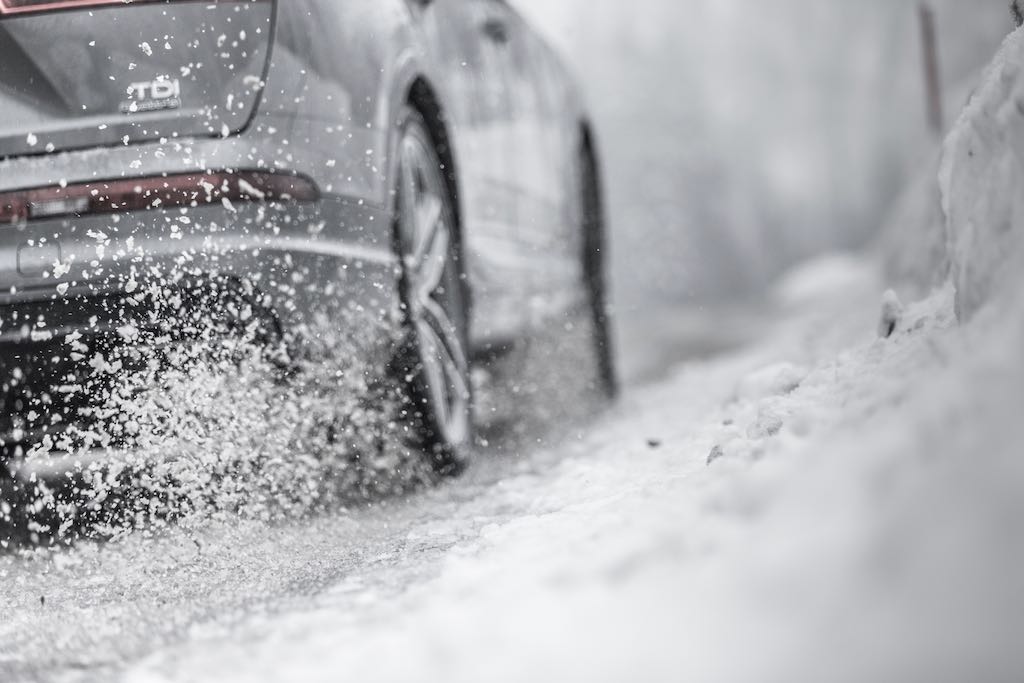Even though you don’t have any studs on your non-studded winter tires, there is still a big difference between winter and all-season tires. With winter tires, you have both studded and non-studded tires. The studs help get traction on ice, and both have a tread design that can ensure that they get a good grip on snow and slush. The tread needs to ensure that the snow doesn’t get stuck in the tread pattern, and it needs to push away the slush on the road surface to avoid slushplaning. This happens when you end up having a layer of slush that can’t be removed, and the tires end up losing contact with the road surface and now are left gliding on top of the layer of slush. To prevent this, the tread design is very different than what you have on all-season tires.
In addition to the tread design, the rubber compound is different in winter tires. The rubber used needs to be soft even at very low temperatures, so the winter tires are optimized for just winter temperatures and the grip needed on winter surfaces. Even though the non-studded tires that might seem quite similar to all-season tires are very different tires, with a different tread design and different rubber compound used in the all-season tire, if you use winter tires when you drive during the summer, even if they are non-studded, the rubber will turn very soft. They would wear out much faster than intended. So, you should switch to all-season tires that are designed for these conditions.
All-season tires have a rubber compound designed for warm weather, so they have the optimal softness during summers and will not wear because of. That. They will provide you with optimal performance in grip and handling when you drive in warm conditions. All-season tires have also been optimized to handle heavy summer rain to have a good grip on wet surfaces. You can often from tire tests find out how well they perform on wet surfaces and how they compare in terms of wet grip. They should also have been optimized for preventing hydroplaning so that you can drive safely during heavy rain.
Similarly, you should not drive with your all-season tires when you have winter conditions. The rubber compound used in all-season tires has been optimized for summer temperatures and will become very hard and won’t give you the needed grip even on dry cold roads. If you then add snow and ice, it becomes very dangerous to drive with all-season tires. You need the combination of a soft, flexible rubber compound and a tread pattern designed to handle winter conditions. Because of this, you must make timely changes to tires between the seasons.
Using tires that have been optimized for the weather conditions that you plan in is important. You should always try to maximize the safety and performance. Not maximizing it can make your driving more costly due to higher wear or then you are less safe when you drive.
For more information regarding all-season tires, visit: https://www.nokiantires.com/
